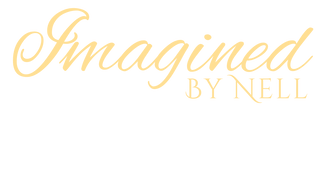Sword of the Spirit – A Symbol of Faith and Divine Power
Embrace the profound truths of Christianity with the Sword of the Spirit Hair Dagger, a striking piece inspired by the Holy Trinity and the Word of God. Designed to honor the Father, Son, and Holy Spirit, this hair dagger merges artistry and theology, creating a meaningful accessory for those who cherish their faith and its deep symbolism.
The hilt of the Hair Sword is adorned with a fleur-de-lis, symbolizing the Trinity and its sacred unity. Each petal reflects the Father, Son, and Holy Spirit, underscoring the three-in-one nature of God. A triptych of crosses further highlights this unity, while the crown represents the Father's divine sovereignty, a reminder of God’s majesty and dominion.
At the heart of the crest is the Chi-Rho, an ancient Christian monogram combining the first two letters of "Christ" in Greek, symbolizing Jesus as the Savior. A dove, the embodiment of the Holy Spirit, graces the design, representing purity, guidance, and divine presence. Together, these elements encapsulate the three persons of the Trinity in harmony.
The blade of the Hair Dagger tells a story of faith and eternity. It begins and ends with the Alpha and Omega, emphasizing God as the beginning and the end, the eternal Creator who encompasses all time and existence. Between these symbols are the Triquetra, representing the Trinity’s unity, and the Ichthys, the fish symbol affirming Jesus as the Son of God and Savior.
The design is a visual expression of the Sword of the Spirit, a biblical concept found in Ephesians 6:17, where the sword symbolizes the Word of God and its power in spiritual warfare. The imagery serves as a reminder of scripture’s authority and its role in providing strength, guidance, and protection.
Materials: Made from a durable zinc and steel alloy, nickel and lead-free, hypoallergenic
Dimensions: 6.5 inches long, perfectly designed for hair styling, altar décor, or as a symbolic accessory
Perfect For: Christians, theologians, and anyone who wishes to carry a powerful symbol of their faith
The Sword of the Spirit Hair Dagger is more than a hair accessory—it’s a testament to faith, a connection to divine wisdom, and a symbol of protection. Whether worn as a hair stick, used as altar decor, or carried as a meaningful token, this piece will inspire devotion, reflection, and strength in your spiritual journey.
Sword of the Spirit – A Symbol of Faith and Divine Power
Embrace the profound truths of Christianity with the Sword of the Spirit Hair Dagger, a striking piece inspired by the Holy Trinity and the Word of God. Designed to honor the Father, Son, and Holy Spirit, this hair dagger merges artistry and theology, creating a meaningful accessory for those who cherish their faith and its deep symbolism.
The hilt of the Hair Sword is adorned with a fleur-de-lis, symbolizing the Trinity and its sacred unity. Each petal reflects the Father, Son, and Holy Spirit, underscoring the three-in-one nature of God. A triptych of crosses further highlights this unity, while the crown represents the Father's divine sovereignty, a reminder of God’s majesty and dominion.
At the heart of the crest is the Chi-Rho, an ancient Christian monogram combining the first two letters of "Christ" in Greek, symbolizing Jesus as the Savior. A dove, the embodiment of the Holy Spirit, graces the design, representing purity, guidance, and divine presence. Together, these elements encapsulate the three persons of the Trinity in harmony.
The blade of the Hair Dagger tells a story of faith and eternity. It begins and ends with the Alpha and Omega, emphasizing God as the beginning and the end, the eternal Creator who encompasses all time and existence. Between these symbols are the Triquetra, representing the Trinity’s unity, and the Ichthys, the fish symbol affirming Jesus as the Son of God and Savior.
The design is a visual expression of the Sword of the Spirit, a biblical concept found in Ephesians 6:17, where the sword symbolizes the Word of God and its power in spiritual warfare. The imagery serves as a reminder of scripture’s authority and its role in providing strength, guidance, and protection.
Materials: Made from a durable zinc and steel alloy, nickel and lead-free, hypoallergenic
Dimensions: 6.5 inches long, perfectly designed for hair styling, altar décor, or as a symbolic accessory
Perfect For: Christians, theologians, and anyone who wishes to carry a powerful symbol of their faith
The Sword of the Spirit Hair Dagger is more than a hair accessory—it’s a testament to faith, a connection to divine wisdom, and a symbol of protection. Whether worn as a hair stick, used as altar decor, or carried as a meaningful token, this piece will inspire devotion, reflection, and strength in your spiritual journey.
Client Reviews
Quick How To
Quick How To










